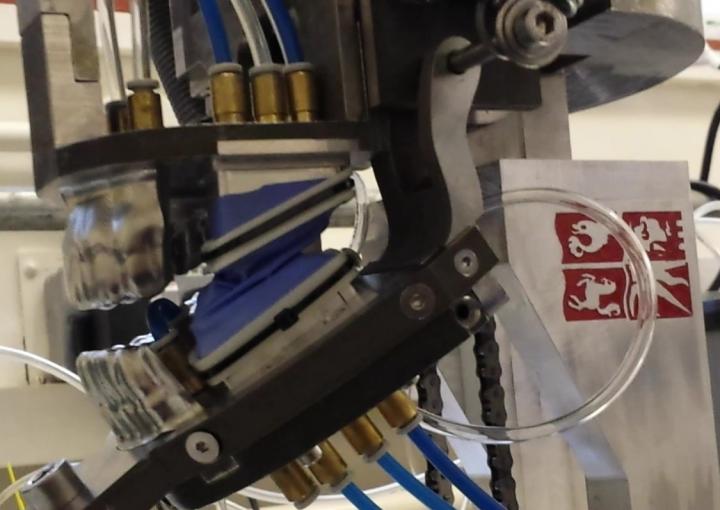
Credit: Dr Kazem Alemzadeh, University of Bristol
Medicated chewing gum has been recognised as a new advanced drug delivery method but currently there is no gold standard for testing drug release from chewing gum in vitro. New research has shown a chewing robot with built-in humanoid jaws could provide opportunities for pharmaceutical companies to develop medicated chewing gum.
The aim of the University of Bristol study, published in IEEE Transactions on Biomedical Engineering, was to confirm whether a humanoid chewing robot could assess medicated chewing gum. The robot is capable of closely replicating the human chewing motion in a closed environment. It features artificial saliva and allows the release of xylitol the gum to be measured.
The study wanted to compare the amount of xylitol remaining in the gum between the chewing robot and human participants. The research team also wanted to assess the amount of xylitol released from chewing the gum.
The researchers found the chewing robot demonstrated a similar release rate of xylitol as human participants. The greatest release of xylitol occurred during the first five minutes of chewing and after 20 minutes of chewing only a low amount of xylitol remained in the gum bolus, irrespective of the chewing method used.
Saliva and artificial saliva solutions respectively were collected after five, ten, 15 and 20 minutes of continuous chewing and the amount of xylitol released from the chewing gum established.
Dr Kazem Alemzadeh, Senior Lecturer in the Department of Mechanical Engineering, who led the research, said: “Bioengineering has been used to create an artificial oral environment that closely mimics that found in humans.
“Our research has shown the chewing robot gives pharmaceutical companies the opportunity to investigate medicated chewing gum, with reduced patient exposure and lower costs using this new method.”
Nicola West, Professor in Restorative Dentistry in the Bristol Dental School and co-author, added: “The most convenient drug administration route to patients is through oral delivery methods. This research, utilising a novel humanoid artificial oral environment, has the potential to revolutionise investigation into oral drug release and delivery.”
###
Media Contact
Joanne Fryer, University of Bristol
[email protected]
Related Journal Article
http://dx.





